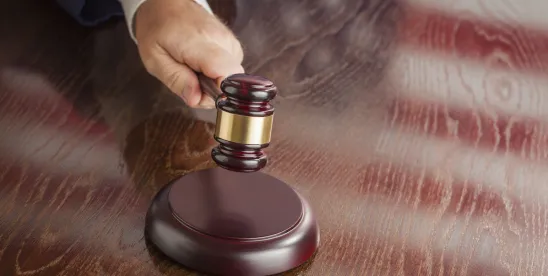Trying to win cases is hard enough, but one thing to think about is that a case may not end at trial. There may be an appeal. And when there is an appeal, what happened at trial will be critical.
Quick Hits
- Winning a trial is only part of the battle, as preserving key legal issues for appeal is crucial.
- To improve the chances of a successful appeal, it is worth focusing on making timely evidentiary objections at trial, ensuring offers of proof are properly positioned, and establishing a clear and complete trial record.
- Additionally, it is important to present well-developed motions for judgment and preserve objections to jury instructions to undergird the case for potential appellate review.
Imagine winning a hard-fought trial, but later having to tell the client the other side has a good chance of getting the win reversed because of an error that the trial team could have helped the court avoid.
Or perhaps, following a loss at trial, a good point for appeal exists. Now imagine telling the client that the point won’t work because the team failed to preserve the error for appeal.
Sometimes, of course, there is tension between what might be best for winning at trial and what might be best for winning on appeal (think about repeated objections in front of the jury), but here are five things to keep in mind during the trial process.
1. Making Evidentiary Objections
It is sensible to make evidentiary objections at the earliest opportunity, and, if the evidence has already been heard, to object and ask that it be stricken.
A proper objection sets forth all bases for its sustainment with an explanation for each basis. If the trial judge sustains the objection, it can be upheld on appeal because the court of appeals can better determine why the judge granted it. In a similar vein, an overruled objection at trial stands a better chance of reversal on appeal when the objection has been properly supported.
Of course, knowing the rules of the court matters. Federal Rule of Evidence 103 says you do not have to keep renewing the same objection to preserve it, but state rules may differ. Even in federal court, it may make sense to keep renewing an objection to avoid a later argument that circumstances changed during the trial or the court’s first ruling was unclear—or conditional—or without prejudice to renewal.
2. Making Offers of Proof
If the other side successfully objects to evidence to be submitted, it makes good sense to make an offer of proof. It is hard to expect the appellate court to find that the trial court should have considered X, if the appellate court has no record of what X is. That means, at the earliest possible time, conveying the substance of the evidence, conveying the relevance and purpose of the evidence in the case, and identifying the grounds for admitting the evidence. It is well worth knowing whether submitting the foregoing during motion in limine briefing is sufficient.
3. Establishing a Clear Record
Making sure that everything is on the record—and that the record is clear—is vital. The trial judge may know what some later reference to “the witness” or “the document” means, but it is helpful if those things are identified by name in the portion of the transcript that will later find its way to the court of appeals. There is often a tendency at trial, either because of fatigue or excessive deference, to fail to fully explain or argue a point because it seems the trial court has already decided, won’t change its mind, or probably is tired of listening. Better to press forward , make the argument, and preserve the point. If it is not in the record, it does not exist for appellate purposes.
4. Presenting a Fully Developed Motion for Judgment
Motions for judgment in federal court are highly stylized, and land mines abound. Worse, they are often made when everyone is exhausted, when the trial is almost over (or one side’s case is over), or when the judge is concerned about moving things along and is growing increasingly impatient with objections. No one wants to annoy a judge. Nevertheless, if mishandled, a first motion for judgment (Rule 50(a)) may destroy the ability to make a renewed motion for judgment pursuant to Rule 50(b). This can be devastating when a jury comes back with an adverse verdict, and it’s time to try to rescue the case with a motion for judgment as a matter of law.
The general rule is this: when moving for judgment as matter of law before a case gets to the jury (often known as a “motion for directed verdict”), the moving party must state the grounds for it, citing, if possible, to the record and the relevant law. It is difficult to do this effectively orally; accordingly, doing it in writing is often better. Having the brief ready to go when making the motion can help. Next, it is worth remembering that a renewed motion for judgment is typically limited to the grounds originally raised in the first motion for judgment (although more of the record exists to be used to support the motion). While there are some exceptions to this general rule, it makes eminent good sense to make the initial motion for judgment as a matter of law as specific and thorough as possible (beyond just saying, “motion for directed verdict” and sitting down). A poorly supported motion risks not only losing the motion, but also the chance to overturn a jury verdict with a posttrial motion. Also, as with all rulings, it is important to get a clear and definitive ruling from the judge.
5. Preserving Objections to Jury Instructions
Charge conferences and jury instructions often represent the most fertile grounds for appeal—if the instructions have been properly objected to and the record has been preserved. If you disagree with the jury instructions or verdict form submitted, it is wise to get that objection—and a ruling—clearly on the record. This is not always as easy as it sounds. In some cases, the judge will hear the objection about an instruction and then change some of the instruction, but not all of it. To preserve the objection, you must object again to the new, final instruction. Remember: Merely submitting an alternative instruction is not the same thing as objecting to the one being submitted.





 />i
/>i

